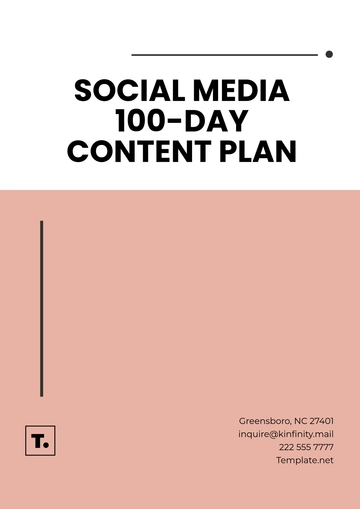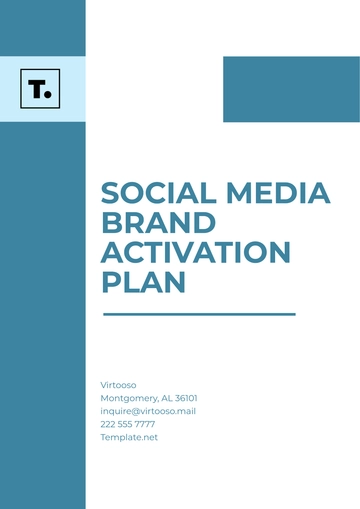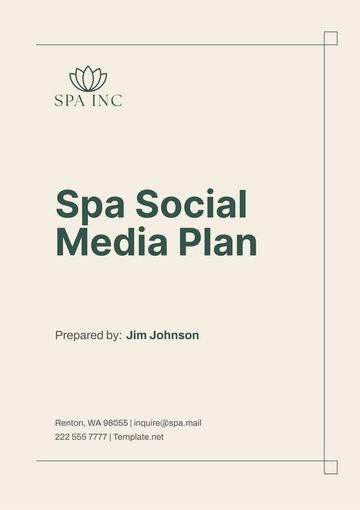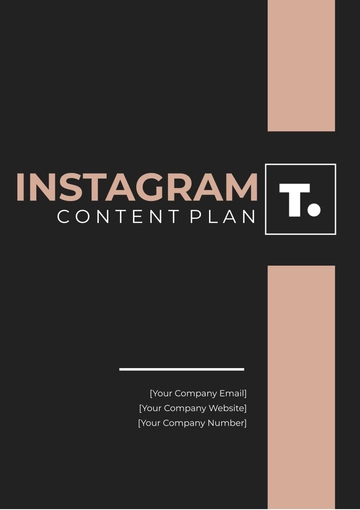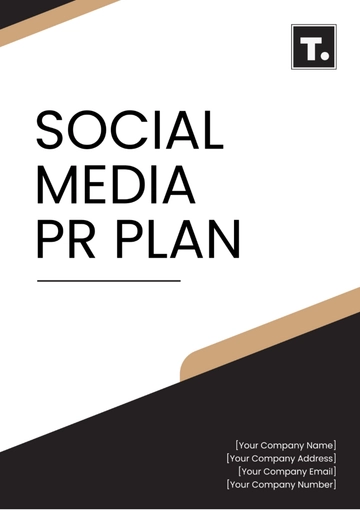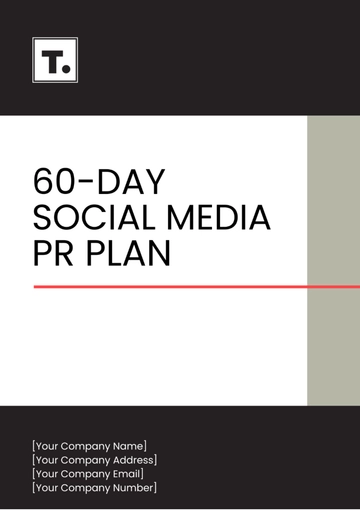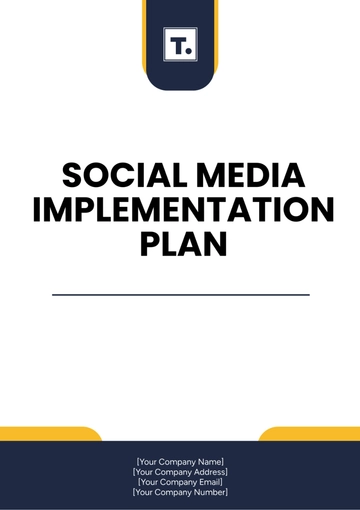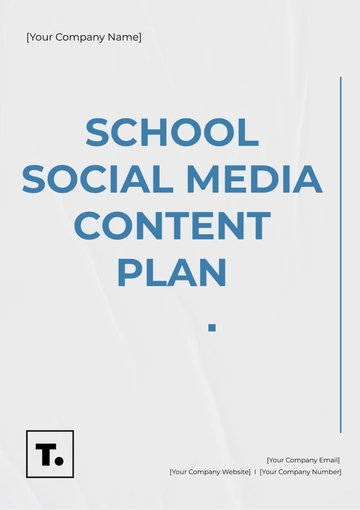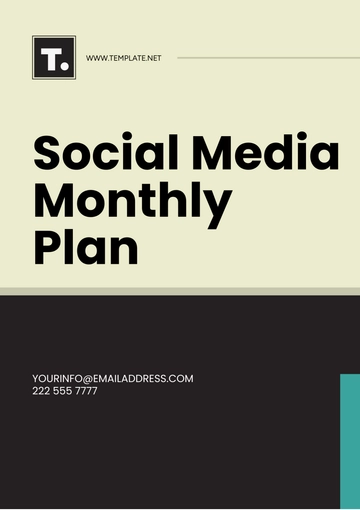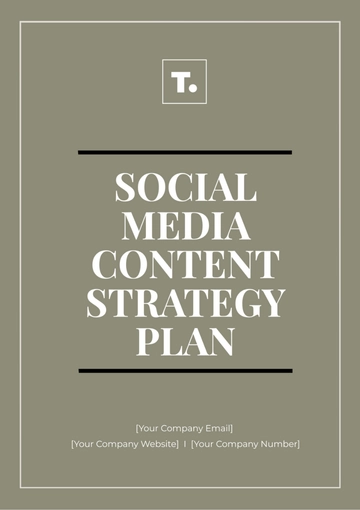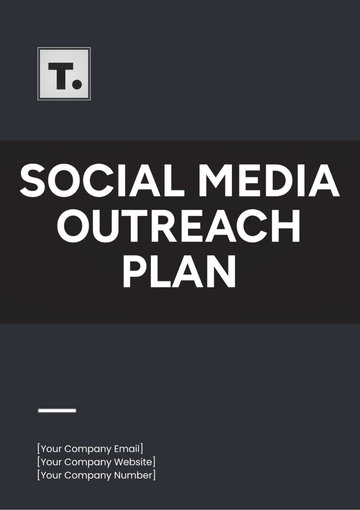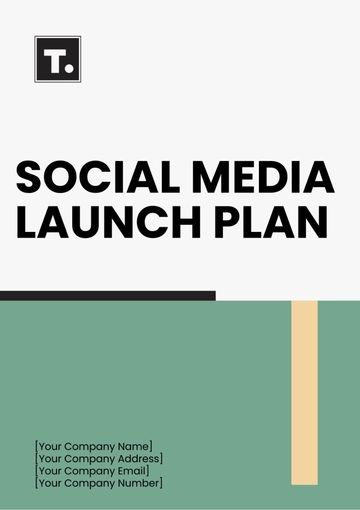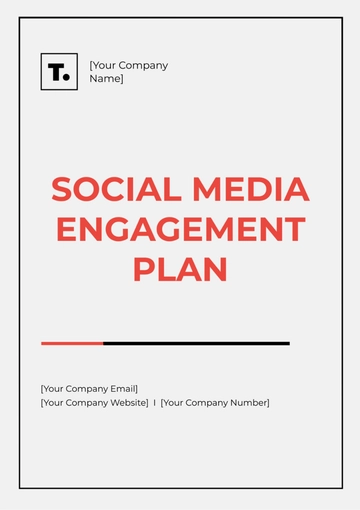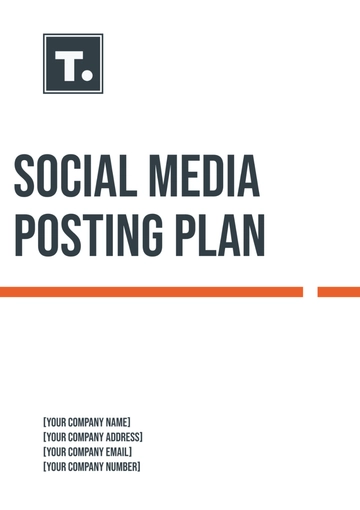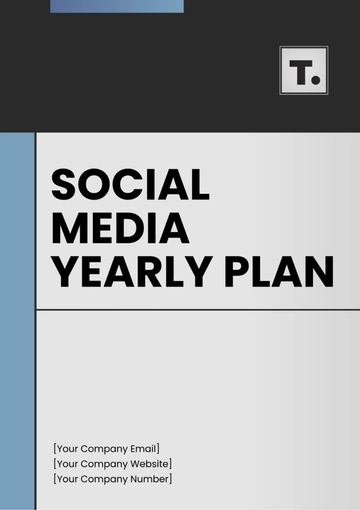Free Social Media Ads Plan

I. Executive Summary
This social media ads plan outlines strategies and tactics to effectively utilize paid advertising on various social media platforms to achieve [YOUR COMPANY NAME]'s marketing objectives. The plan includes target audience identification, ad creative development, budget allocation, and performance tracking.
II. Goals
Increase Brand Awareness: Expand reach and visibility among the target audience.
Drive Website Traffic: Direct users to the company website or specific landing pages.
Generate Leads/Sales: Convert social media users into leads or customers.
III. Target Audience
Demographics: [AGE RANGE, GENDER, LOCATION, INCOME LEVEL]
Interests: [INTERESTS AND HOBBIES]
Behaviors: [PLATFORMS THEY FREQUENT, PURCHASE BEHAVIOR]
IV. Platform Selection
A. Primary Platforms
Facebook: Utilize Facebook Ads Manager for targeted advertising based on demographics, interests, and behaviors.
Instagram: Leverage visually appealing ads and Stories to engage with a younger audience.
LinkedIn: Target professionals and B2B clients through sponsored content and InMail messages.
Twitter: Engage with users through promoted tweets and hashtag targeting.
B. Additional Platforms
Pinterest: Reach users searching for inspiration and products through promoted pins.
Snapchat: Target a younger demographic with interactive ads and sponsored lenses.
V. Ad Types
Image Ads: Eye-catching visuals to showcase products or brand imagery.
Video Ads: Engaging video content to convey brand messaging or product demonstrations.
Carousel Ads: Showcase multiple products or features within a single ad unit.
Lead Generation Ads: Collect user information directly within the ad to generate leads.
VI. Ad Creative and Copy
Visuals: Use high-quality images or videos that resonate with the target audience.
Copy: Craft compelling ad copy that highlights benefits, features, and calls to action.
Personalization: Tailor ads to specific audience segments to increase relevance and engagement.
VII. Budget Allocation
Platform Budget Breakdown:
Platform | Budget Allocation |
|---|---|
$[AMOUNT] | |
$[AMOUNT] | |
$[AMOUNT] | |
$[AMOUNT] |
Additional Platforms (Optional):
Platform | Budget Allocation |
|---|---|
$[AMOUNT] | |
Snapchat | $[AMOUNT] |
VIII. Campaign Setup
Campaign Objective: Choose objectives aligned with overall goals such as awareness, consideration, or conversion.
Targeting: Define audience targeting criteria including demographics, interests, and behaviors.
Ad Placement: Select placement options within each platform based on audience behavior and preferences.
IX. Monitoring and Optimization
Performance Tracking: Monitor key metrics such as impressions, clicks, conversions, and return on ad spend (ROAS).
A/B Testing: Experiment with different ad creatives, copy variations, and audience segments to optimize performance.
Budget Reallocation: Adjust budget allocation based on ad performance to maximize ROI.
X. Reporting and Analysis
Regular Reporting: Provide regular updates on ad performance and insights to stakeholders.
Data Analysis: Analyze ad performance data to identify trends, opportunities, and areas for improvement.
Actionable Insights: Use insights to refine targeting, creative, and overall ad strategy for future campaigns.
XI. Conclusion
By implementing this social media ads plan, [YOUR COMPANY NAME] aims to effectively leverage paid advertising to achieve marketing objectives, increase brand visibility, drive website traffic, and generate leads/sales.
- 100% Customizable, free editor
- Access 1 Million+ Templates, photo’s & graphics
- Download or share as a template
- Click and replace photos, graphics, text, backgrounds
- Resize, crop, AI write & more
- Access advanced editor
Boost your ad campaigns with Template.net's Social Media Ads Plan Template. Fully customizable and editable in our Ai Editor Tool, it offers a streamlined solution for creating impactful ads effortlessly. Tailor every detail to your needs and maximize your social media marketing strategy with ease
You may also like
- Finance Plan
- Construction Plan
- Sales Plan
- Development Plan
- Career Plan
- Budget Plan
- HR Plan
- Education Plan
- Transition Plan
- Work Plan
- Training Plan
- Communication Plan
- Operation Plan
- Health And Safety Plan
- Strategy Plan
- Professional Development Plan
- Advertising Plan
- Risk Management Plan
- Restaurant Plan
- School Plan
- Nursing Home Patient Care Plan
- Nursing Care Plan
- Plan Event
- Startup Plan
- Social Media Plan
- Staffing Plan
- Annual Plan
- Content Plan
- Payment Plan
- Implementation Plan
- Hotel Plan
- Workout Plan
- Accounting Plan
- Campaign Plan
- Essay Plan
- 30 60 90 Day Plan
- Research Plan
- Recruitment Plan
- 90 Day Plan
- Quarterly Plan
- Emergency Plan
- 5 Year Plan
- Gym Plan
- Personal Plan
- IT and Software Plan
- Treatment Plan
- Real Estate Plan
- Law Firm Plan
- Healthcare Plan
- Improvement Plan
- Media Plan
- 5 Year Business Plan
- Learning Plan
- Marketing Campaign Plan
- Travel Agency Plan
- Cleaning Services Plan
- Interior Design Plan
- Performance Plan
- PR Plan
- Birth Plan
- Life Plan
- SEO Plan
- Disaster Recovery Plan
- Continuity Plan
- Launch Plan
- Legal Plan
- Behavior Plan
- Performance Improvement Plan
- Salon Plan
- Security Plan
- Security Management Plan
- Employee Development Plan
- Quality Plan
- Service Improvement Plan
- Growth Plan
- Incident Response Plan
- Basketball Plan
- Emergency Action Plan
- Product Launch Plan
- Spa Plan
- Employee Training Plan
- Data Analysis Plan
- Employee Action Plan
- Territory Plan
- Audit Plan
- Classroom Plan
- Activity Plan
- Parenting Plan
- Care Plan
- Project Execution Plan
- Exercise Plan
- Internship Plan
- Software Development Plan
- Continuous Improvement Plan
- Leave Plan
- 90 Day Sales Plan
- Advertising Agency Plan
- Employee Transition Plan
- Smart Action Plan
- Workplace Safety Plan
- Behavior Change Plan
- Contingency Plan
- Continuity of Operations Plan
- Health Plan
- Quality Control Plan
- Self Plan
- Sports Development Plan
- Change Management Plan
- Ecommerce Plan
- Personal Financial Plan
- Process Improvement Plan
- 30-60-90 Day Sales Plan
- Crisis Management Plan
- Engagement Plan
- Execution Plan
- Pandemic Plan
- Quality Assurance Plan
- Service Continuity Plan
- Agile Project Plan
- Fundraising Plan
- Job Transition Plan
- Asset Maintenance Plan
- Maintenance Plan
- Software Test Plan
- Staff Training and Development Plan
- 3 Year Plan
- Brand Activation Plan
- Release Plan
- Resource Plan
- Risk Mitigation Plan
- Teacher Plan
- 30 60 90 Day Plan for New Manager
- Food Safety Plan
- Food Truck Plan
- Hiring Plan
- Quality Management Plan
- Wellness Plan
- Behavior Intervention Plan
- Bonus Plan
- Investment Plan
- Maternity Leave Plan
- Pandemic Response Plan
- Succession Planning
- Coaching Plan
- Configuration Management Plan
- Remote Work Plan
- Self Care Plan
- Teaching Plan
- 100-Day Plan
- HACCP Plan
- Student Plan
- Sustainability Plan
- 30 60 90 Day Plan for Interview
- Access Plan
- Site Specific Safety Plan
